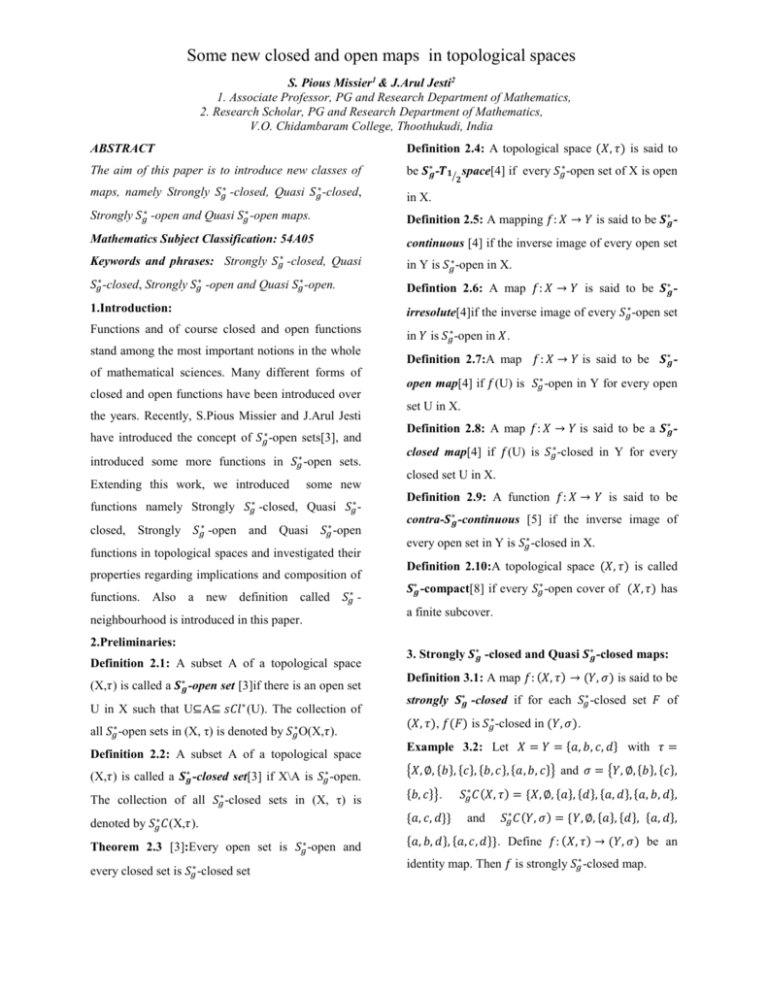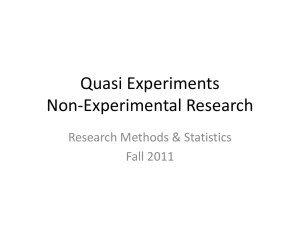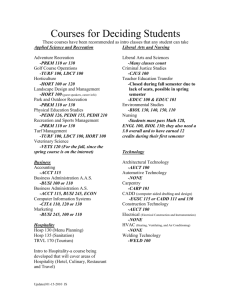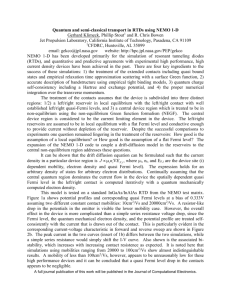S. Pious Missier1 & J.Arul Jesti2 1. Associate Professor, PG and
advertisement

Some new closed and open maps in topological spaces
S. Pious Missier1 & J.Arul Jesti2
1. Associate Professor, PG and Research Department of Mathematics,
2. Research Scholar, PG and Research Department of Mathematics,
V.O. Chidambaram College, Thoothukudi, India
ABSTRACT
Definition 2.4: A topological space (𝑋, 𝜏) is said to
The aim of this paper is to introduce new classes of
be 𝑺𝒈∗ -𝑻𝟏⁄ space[4] if every 𝑆𝑔∗ -open set of X is open
maps, namely Strongly 𝑆𝑔∗ -closed, Quasi 𝑆𝑔∗ -closed,
in X.
Strongly 𝑆𝑔∗ -open and Quasi 𝑆𝑔∗ -open maps.
Definition 2.5: A mapping 𝑓: 𝑋 → 𝑌 is said to be 𝑺𝒈∗ -
Mathematics Subject Classification: 54A05
continuous [4] if the inverse image of every open set
Keywords and phrases: Strongly 𝑆𝑔∗ -closed, Quasi
in Y is 𝑆𝑔∗ -open in X.
𝑆𝑔∗ -closed, Strongly 𝑆𝑔∗ -open and Quasi 𝑆𝑔∗ -open.
Defintion 2.6: A map 𝑓: 𝑋 → 𝑌 is said to be 𝑺∗𝒈 -
1.Introduction:
irresolute[4]if the inverse image of every 𝑆𝑔∗ -open set
Functions and of course closed and open functions
in 𝑌 is 𝑆𝑔∗ -open in 𝑋.
stand among the most important notions in the whole
Definition 2.7:A map 𝑓: 𝑋 → 𝑌 is said to be 𝑺𝒈∗ -
of mathematical sciences. Many different forms of
closed and open functions have been introduced over
the years. Recently, S.Pious Missier and J.Arul Jesti
have introduced the concept of 𝑆𝑔∗ -open sets[3], and
introduced some more functions in 𝑆𝑔∗ -open sets.
Extending this work, we introduced
some new
functions namely Strongly 𝑆𝑔∗ -closed, Quasi 𝑆𝑔∗ closed, Strongly 𝑆𝑔∗ -open and Quasi 𝑆𝑔∗ -open
functions in topological spaces and investigated their
properties regarding implications and composition of
functions. Also a new definition called
𝑆𝑔∗ -
neighbourhood is introduced in this paper.
2.Preliminaries:
Definition 2.1: A subset A of a topological space
(X,𝜏) is called a 𝑺𝒈∗ -open set [3]if there is an open set
U in X such that U⊆A⊆ 𝑠𝐶𝑙 ∗ (U). The collection of
all 𝑆𝑔∗ -open sets in (X, τ) is denoted by 𝑆𝑔∗ O(X,𝜏).
Definition 2.2: A subset A of a topological space
𝟐
open map[4] if 𝑓(U) is 𝑆𝑔∗ -open in Y for every open
set U in X.
Definition 2.8: A map 𝑓: 𝑋 → 𝑌 is said to be a 𝑺𝒈∗ closed map[4] if 𝑓(U) is 𝑆𝑔∗ -closed in Y for every
closed set U in X.
Definition 2.9: A function 𝑓: 𝑋 → 𝑌 is said to be
contra-𝑺∗𝒈 -continuous [5] if the inverse image of
every open set in Y is 𝑆𝑔∗ -closed in X.
Definition 2.10:A topological space (𝑋, 𝜏) is called
𝑺∗𝒈 -compact[8] if every 𝑆𝑔∗ -open cover of (𝑋, 𝜏) has
a finite subcover.
3. Strongly 𝑺∗𝒈 -closed and Quasi 𝑺∗𝒈 -closed maps:
Definition 3.1: A map 𝑓: (𝑋, 𝜏) → (𝑌, 𝜎) is said to be
strongly 𝑺∗𝒈 -closed if for each 𝑆𝑔∗ -closed set 𝐹 of
(𝑋, 𝜏), 𝑓(𝐹) is 𝑆𝑔∗ -closed in (𝑌, 𝜎).
Example 3.2: Let 𝑋 = 𝑌 = {𝑎, 𝑏, 𝑐, 𝑑} with 𝜏 =
(X,𝜏) is called a 𝑺𝒈∗ -closed set[3] if X\A is 𝑆𝑔∗ -open.
{𝑋, ∅, {𝑏}, {𝑐}, {𝑏, 𝑐}, {𝑎, 𝑏, 𝑐}} and 𝜎 = {𝑌, ∅, {𝑏}, {𝑐},
The collection of all 𝑆𝑔∗ -closed sets in (X, τ) is
{𝑏, 𝑐}}.
denoted by 𝑆𝑔∗ 𝐶(X,𝜏).
{𝑎, 𝑐, 𝑑}}
Theorem 2.3 [3]:Every open set is 𝑆𝑔∗ -open and
{𝑎, 𝑏, 𝑑}, {𝑎, 𝑐, 𝑑}}. Define 𝑓: (𝑋, 𝜏) → (𝑌, 𝜎) be an
every closed set is 𝑆𝑔∗ -closed set
𝑆𝑔∗ 𝐶(𝑋, 𝜏) = {𝑋, ∅, {𝑎}, {𝑑}, {𝑎, 𝑑}, {𝑎, 𝑏, 𝑑},
and
𝑆𝑔∗ 𝐶(𝑌, 𝜎) = {𝑌, ∅, {𝑎}, {𝑑}, {𝑎, 𝑑},
identity map. Then 𝑓 is strongly 𝑆𝑔∗ -closed map.
Definition 3.3: A map 𝑓: (𝑋, 𝜏) → (𝑌, 𝜎) is said to be
𝑆𝑔∗ 𝐶(𝑋, 𝜏) = {𝑋, ∅, {𝑏}, {𝑐}, {𝑑}, {𝑏, 𝑐}, {𝑏, 𝑑}, {𝑐, 𝑑},
quasi 𝑺∗𝒈 -closed if for each 𝑆𝑔∗ -closed set 𝐹 of
{𝑏, 𝑐, 𝑑}} and 𝑆𝑔∗ 𝐶(𝑌, 𝜎) = {𝑌, ∅, {𝑎}, {𝑐}, {𝑑}, {𝑎, 𝑐},
(𝑋, 𝜏), 𝑓(𝐹) is closed in (𝑌, 𝜎).
{𝑎, 𝑑}, {𝑐, 𝑑}, {𝑎, 𝑏, 𝑐}, {𝑎, 𝑐, 𝑑}}. Define
Example
3.4:
𝑆𝑔∗ 𝐶(𝑋
{∅, 𝑋, {𝑎}} and
and
𝑌 = {𝑑, 𝑒}
{∅, 𝑌, {𝑒}}.
𝑋 = {𝑎, 𝑏, 𝑐}
Let
𝑓: (𝑋, 𝜏) →
𝜏=
(𝑌, 𝜎) by 𝑓(𝑎) = 𝑏, 𝑓(𝑏) = 𝑎, 𝑓(𝑐) = 𝑐 and 𝑓(𝑑) =
, 𝜏) = {∅, 𝑋, {𝑏}, {𝑐}, {𝑏, 𝑐}}
𝑑. Then 𝑓 is closed but not quasi 𝑆𝑔∗ -closed since {𝑏}
with.
with
𝜎 = {∅, 𝑌, {𝑑}}.
Define 𝑓: (𝑋, 𝜏) → (𝑌, 𝜎)
by
𝜎𝑐 =
𝑓(𝑏) =
is 𝑆𝑔∗ -closed but 𝑓({𝑏}} = {𝑎} is not closed.
Theorem 3.9: Every quasi 𝑆𝑔∗ -closed map is 𝑆𝑔∗ -
𝑓(𝑐) = 𝑒 and 𝑓(𝑎) = 𝑑. Then 𝑓 is quasi 𝑆𝑔∗ -closed
closed but not conversely.
map.
Proof: Let 𝑓: (𝑋, 𝜏) → (𝑌, 𝜎) be a quasi 𝑆𝑔∗ -closed
Theorem 3.5: Every quasi 𝑆𝑔∗ -closed map is strongly
map. Let 𝑂 be a closed set in (𝑋, 𝜏) which implies 𝑂
𝑆𝑔∗ -closed
is 𝑆𝑔∗ -closed in (𝑋, 𝜏). Since 𝑓 is quasi 𝑆𝑔∗ -closed,
but not conversely.
Proof: Let 𝑓: (𝑋, 𝜏) → (𝑌, 𝜎) be a quasi 𝑆𝑔∗ -closed
𝑓(𝑂) is closed in (𝑌, 𝜎) which implies 𝑓(𝑂) is 𝑆𝑔∗ -
map. Let 𝐹 be a 𝑆𝑔∗ -closed set in (𝑋, 𝜏). Since 𝑓 is
closed in (𝑌, 𝜎). Hence 𝑓 is 𝑆𝑔∗ -closed.
quasi 𝑆𝑔∗ -closed, 𝑓(𝐹) is closed in (𝑌, 𝜎). Since every
Example 3.10: Let 𝑋 = 𝑌 = {𝑎, 𝑏, 𝑐, 𝑑} with 𝜏 =
closed set is
𝑆𝑔∗ -closed,
𝑓(𝐹) is
𝑆𝑔∗ -closed
in (𝑌, 𝜎).
{𝑋, ∅, {𝑏}, {𝑎, 𝑏, 𝑐}} and 𝜎 = {𝑌, 𝜎, {𝑎}}. Therefore
Hence 𝑓 is strongly 𝑆𝑔∗ -closed.
𝜏 𝑐 = {𝑋, ∅, {𝑑}, {𝑎, 𝑐, 𝑑}} and 𝜎 𝑐 = {𝑌, 𝜎, {𝑏, 𝑐, 𝑑}}.
Example 3.6: Let 𝑋 = 𝑌 = {𝑎, 𝑏, 𝑐} with 𝜏 =
Hence
{𝑋, ∅, {𝑎, 𝑏}} and 𝜎 = {𝑌, 𝜎, {𝑎}} hence 𝑆𝑔∗ 𝐶(𝑋, 𝜏) =
{𝑑}, {𝑎, 𝑐}, {𝑎, 𝑑}, {𝑐, 𝑑}, {𝑎, 𝑐, 𝑑}} and 𝑆𝑔∗ 𝐶(𝑌, 𝜎) =
{𝑋, ∅, {𝑐}}
and
𝑆𝑔∗ 𝐶(𝑌, 𝜎) = {𝑌, ∅, {𝑏}, {𝑐}, {𝑏, 𝑐}.
𝑆𝑔∗ 𝐶(𝑋, 𝜏) = {𝑋, ∅, {𝑎}, {𝑐},
{𝑌, ∅, {𝑏}, {𝑐}, {𝑑}, {𝑏, 𝑐}, {𝑏, 𝑑}, {𝑐, 𝑑}, {𝑏, 𝑐, 𝑑}}.
Define 𝑓: (𝑋, 𝜏) → (𝑌, 𝜎) by 𝑓(𝑎) = 𝑎, 𝑓(𝑏) = 𝑐 and
Define
𝑓(𝑐) = 𝑏. Then 𝑓 is strongly 𝑆𝑔∗ -closed but not quasi
𝑎, 𝑓(𝑐) = 𝑐 and 𝑓(𝑑) = 𝑑. Then 𝑓 is 𝑆𝑔∗ -closed but
𝑆𝑔∗ -closed since 𝑓({𝑐}} = {𝑏} is 𝑆𝑔∗ -closed but not
not quasi 𝑆𝑔∗ -closed since {𝑐} is 𝑆𝑔∗ -closed in (𝑋, 𝜏)
closed.
but 𝑓({𝑐}} = {𝑐} is not closed in (𝑌, 𝜎) .
Theorem 3.7: Every quasi 𝑆𝑔∗ -closed map is closed
Theorem 3.11: Every strongly 𝑆𝑔∗ -closed map is 𝑆𝑔∗ -
but not conversely.
closed but not conversely.
Proof: Let 𝑓: (𝑋, 𝜏) → (𝑌, 𝜎) be a quasi 𝑆𝑔∗ -closed
Proof: Let 𝑓: (𝑋, 𝜏) → (𝑌, 𝜎) be a strongly 𝑆𝑔∗ -closed
map. Let 𝑉 be a closed set in (𝑋, 𝜏) which implies 𝑉
map. Let 𝐴 be a closed set in (𝑋, 𝜏) which implies 𝐴
is
𝑆𝑔∗ -closed
in (𝑋, 𝜏). Since 𝑓 is quasi
𝑆𝑔∗ -closed,
𝑓: (𝑋, 𝜏) → (𝑌, 𝜎)
by
𝑓(𝑎) = 𝑏, 𝑓(𝑏) =
is 𝑆𝑔∗ -closed in (𝑋, 𝜏). Since 𝑓 is strongly 𝑆𝑔∗ -closed,
𝑓(𝑉) is closed in (𝑌, 𝜎). Hence 𝑓 is closed.
𝑓(𝐴) is 𝑆𝑔∗ -closed in (𝑌, 𝜎). Hence 𝑓 is 𝑆𝑔∗ -closed.
Example 3.8: Let 𝑋 = 𝑌 = {𝑎, 𝑏, 𝑐, 𝑑} with 𝜏 =
Example 3.12: Let 𝑋 = 𝑌 = {𝑎, 𝑏, 𝑐, 𝑑} with 𝜏 =
{𝑋, ∅, {𝑎}} and 𝜎 = {𝑌, 𝜎, {𝑏}, {𝑑}, {𝑏, 𝑑}, {𝑎, 𝑏, 𝑐}}.
{𝑋, ∅, {𝑎}} and 𝜎 = {𝑌, 𝜎, {𝑏}, {𝑐}, {𝑏, 𝑐}}. Therefore
Therefore
𝑐
𝜏 = {𝑋, ∅, {𝑏, 𝑐, 𝑑}}
{𝑌, 𝜎, {𝑑}, {𝑎, 𝑐}, {𝑎, 𝑏, 𝑐}, {𝑎, 𝑐, 𝑑}}.
and
𝑐
𝜎 =
Hence
𝜏 𝑐 = {𝑋, ∅, {𝑏, 𝑐, 𝑑}} and 𝜎 𝑐 = {𝑌, 𝜎, {𝑎, 𝑑}, {𝑎, 𝑐, 𝑑},
𝑆𝑔∗ 𝐶(𝑋, 𝜏) =
Conversely, let 𝐹 be a 𝑆𝑔∗ -closed set of 𝑋 and put 𝐵 =
{𝑋, ∅, {𝑏}, {𝑐}, {𝑑}, {𝑏, 𝑐}, {𝑏, 𝑑}, {𝑐, 𝑑}, {𝑏, 𝑐, 𝑑}} and
(𝑓(𝐹))𝑐 . Then we have 𝑓 −1 (𝐵) ⊂ 𝐹 𝑐 and 𝐹 𝑐 is 𝑆𝑔∗ -
𝑆𝑔∗ 𝐶(𝑌, 𝜎) = {𝑌, ∅, {𝑎}, {𝑑}, {𝑎, 𝑑}, {𝑎, 𝑏, 𝑑}, {𝑎, 𝑐, 𝑑}}.
open set in 𝑋 containing 𝑓 −1 (𝐵). By hypothesis,
{𝑎, 𝑏, 𝑑}}.
Define
Hence
𝑓: (𝑋, 𝜏) → (𝑌, 𝜎)
by
𝑓(𝑎) = 𝑏, 𝑓(𝑏) =
there exists a open set 𝑉 of 𝑌 containing 𝐵 and
𝑎, 𝑓(𝑐) = 𝑐 and 𝑓(𝑑) = 𝑑. Then 𝑓 is 𝑆𝑔∗ -closed but
𝑓 −1 (𝑉) ⊂ 𝐹 𝑐
not strongly 𝑆𝑔∗ -closed since {𝑐} is 𝑆𝑔∗ -closed in(𝑋, 𝜏)
𝑓 −1 (𝑉 𝑐 ). Hence we obtain 𝑓(𝐹) ⊂ 𝑉 𝑐 . Since 𝑉 𝑐 is
but 𝑓({𝑐}} = {𝑐} is not 𝑆𝑔∗ -closed in (𝑌, 𝜎).
closed, 𝑓(𝐹) is closed in 𝑌. This implies that 𝑓 is
Remark 3.13: The following examples shows that
strongly 𝑆𝑔∗ -closed maps and closed maps are
and
so
𝐹 ⊂ (𝑓 −1 (𝑉))𝑐 =
quasi 𝑆𝑔∗ -closed.
Theorem 3.17: In a topological space 𝑋, assume that
independent to each other.
𝑆𝑔∗ 𝑂(𝑋, 𝜏) is closed under any union. A map 𝑓: 𝑋 →
Example 3.14: In the example 3.12, 𝑓 is a closed
𝑌 is quasi 𝑆𝑔∗ -closed if and only if for every subset 𝑈
map but not strongly 𝑆𝑔∗ -closed map.
of 𝑋, 𝐶𝑙(𝑓(𝑈)) ⊂ 𝑓(𝑆𝑔∗ 𝐶𝑙(𝑈)).
Example 3.15: Let 𝑋 = 𝑌 = {𝑎, 𝑏, 𝑐, 𝑑} with 𝜏 =
Proof: Let 𝑓: 𝑋 → 𝑌 be quasi 𝑆𝑔∗ -closed. We have
{𝑋, ∅, {𝑏}, {𝑐}, {𝑏, 𝑐}}
𝜎 = {𝑌, ∅, {𝑏}, {𝑎, 𝑏, 𝑐}}.
𝑈 ⊂ 𝑆𝑔∗ 𝐶𝑙(𝑈) and 𝑆𝑔∗ 𝐶𝑙(𝑈) is a 𝑆𝑔∗ -closed set. Hence
Therefore 𝜏 𝑐 = {𝑋, ∅, {𝑎, 𝑑}, {𝑎, 𝑏, 𝑑}, {𝑎, 𝑐, 𝑑}} and
we obtain 𝑓(𝑈) ⊂ 𝑓(𝑆𝑔∗ 𝐶𝑙(𝑈)) and 𝑓(𝑆𝑔∗ 𝐶𝑙(𝑈)) is
𝜎 𝑐 = {𝑌, 𝜎, {𝑑}, {𝑎, 𝑐, 𝑑}}.
closed. Hence 𝐶𝑙(𝑓(𝑈)) ⊂ 𝑓(𝑆𝑔∗ 𝐶𝑙(𝑈)).
and
𝑆𝑔∗ 𝐶(𝑋, 𝜏) =
Hence
{𝑋, ∅, {𝑎}, {𝑑}, {𝑎, 𝑑}, {𝑎, 𝑏, 𝑑}, {𝑎, 𝑐, 𝑑}}
and
Conversely, assume that the given condition holds. If
𝑆𝑔∗ 𝐶(𝑌, 𝜎) = {𝑌, ∅, {𝑎}, {𝑐}, {𝑑}, {𝑎, 𝑐}, {𝑎, 𝑑}, {𝑐, 𝑑},
𝑈 is a 𝑆𝑔∗ -closed set, then 𝐶𝑙(𝑓(𝑈)) ⊂ 𝑓(𝑆𝑔∗ 𝐶𝑙(𝑈)) =
{𝑎, 𝑐, 𝑑}}. Define 𝑓: (𝑋, 𝜏) → (𝑌, 𝜎) by 𝑓(𝑎) =
𝑓(𝑈). Consequently, 𝑓(𝑈) = 𝐶𝑙(𝑓(𝑈)). Hence 𝑓(𝑈)
𝑎, 𝑓(𝑏) = 𝑓(𝑑) = 𝑑 and 𝑓(𝑐) = 𝑐.
is closed. Therefore 𝑓 is quasi 𝑆𝑔∗ -closed.
Then
𝑓
is
strongly 𝑆𝑔∗ -closed but not closed since {𝑎, 𝑑} is
Theorem 3.18: In a topological space 𝑋, assume that
closed in (𝑋, 𝜏) but 𝑓({𝑎, 𝑑}} = {𝑎, 𝑑} is not closed
𝑆𝑔∗ 𝑂(𝑋, 𝜏) is closed under any union. A map 𝑓: 𝑋 →
in (𝑌, 𝜎) .
𝑌 is strongly 𝑆𝑔∗ -closed if and only if for every subset
Theorem 3.16: A surjective mapping 𝑓: 𝑋 → 𝑌 is
𝑈 of 𝑋, 𝑆𝑔∗ 𝐶𝑙(𝑓(𝑈)) ⊂ 𝑓(𝑆𝑔∗ 𝐶𝑙(𝑈)).
quasi 𝑆𝑔∗ -closed if and only if for any subset 𝐵 of 𝑌
Proof: Let 𝑓 be strongly 𝑆𝑔∗ -closed. We have 𝑈 ⊂
and for each 𝑆𝑔∗ -open set 𝑉 of 𝑋 containing 𝑓 −1 (𝐵),
𝑆𝑔∗ 𝐶𝑙(𝑈) and 𝑆𝑔∗ 𝐶𝑙(𝑈) is a 𝑆𝑔∗ -closed set. Hence we
there is an open set 𝑉 of 𝑌 containing 𝐵 and
obtain 𝑓(𝑈) ⊂ 𝑓(𝑆𝑔∗ 𝐶𝑙(𝑈)) and 𝑓(𝑆𝑔∗ 𝐶𝑙(𝑈)) is 𝑆𝑔∗ -
𝑓 −1 (𝑉) ⊂ 𝑈.
closed. Hence 𝑆𝑔∗ 𝐶𝑙(𝑓(𝑈)) ⊂ 𝑓(𝑆𝑔∗ 𝐶𝑙(𝑈)).
Proof: Suppose 𝑓 is quasi 𝑆𝑔∗ -closed. Let 𝐵 ⊂ 𝑌 and
𝑈 be a
𝑆𝑔∗ -open
set of 𝑋 containing 𝑓
−1 (𝐵).
Now put
𝑉 = (𝑓(𝑈 𝑐 ))𝑐 . Then 𝑉 is a open set of 𝑌 containing
𝐵 such that 𝑓
−1 (𝑉)
⊂ 𝑈.
Conversely, assume that the given condition holds. If
𝑈
is
a
𝑆𝑔∗ -closed
𝑓(𝑆𝑔∗ 𝐶𝑙(𝑈)) = 𝑓(𝑈).
𝑆𝑔∗ 𝐶𝑙(𝑓(𝑈)).
set,
𝑆𝑔∗ 𝐶𝑙(𝑓(𝑈)) ⊂
Consequently,
Hence 𝑓(𝑈) is
strongly 𝑆𝑔∗ -closed.
then
𝑆𝑔∗ -closed.
𝑓(𝑈) =
Therefore 𝑓 is
Theorem 3.19: The composition of two strongly 𝑆𝑔∗ -
Proof:
closed maps are strongly 𝑆𝑔∗ -closed.
(i) Let 𝐹 be an arbitrary closed set in 𝑌. Then 𝐹 is 𝑆𝑔∗ -
Proof: Let 𝑓: 𝑋 → 𝑌 and 𝑔: 𝑌 → 𝑍 be two strongly
closed set in 𝑌. Since 𝑓 is 𝑆𝑔∗ -irresolute, 𝑓 −1 (𝐹) is
𝑆𝑔∗ -closed maps. Let F be a 𝑆𝑔∗ -closed set in 𝑋. Since
𝑆𝑔∗ -closed in 𝑋. Since 𝑔 ∘ 𝑓: 𝑋 → 𝑍 is quasi 𝑆𝑔∗ -closed
𝑓 is strongly 𝑆𝑔∗ -closed map,𝑓(𝐹) is 𝑆𝑔∗ -closed in 𝑌.
and 𝑓 is surjective, (𝑔 ∘ 𝑓)(𝑓 −1 (𝐹)) = 𝑔(𝐹) is
Also since 𝑔 is strongly 𝑆𝑔∗ -closed map, 𝑔(𝑓(𝐹)) =
closed in 𝑍. Thus 𝑔 is a closed map.
(𝑔 ∘ 𝑓)(𝐹) is 𝑆𝑔∗ -closed in 𝑍. Thus 𝑔 ∘ 𝑓: 𝑋 → 𝑍 is
(ii) Let 𝐹 be any 𝑆𝑔∗ -closed set in 𝑋. Since 𝑔 ∘ 𝑓: 𝑋 →
strongly 𝑆𝑔∗ -closed.
𝑍 is quasi 𝑆𝑔∗ -closed, (𝑔 ∘ 𝑓)(𝐹) is closed in 𝑍. Since
Theorem 3.20: If 𝑓: 𝑋 → 𝑌 and 𝑔: 𝑌 → 𝑍 are two
𝑔 is 𝑆𝑔∗ -continuous injection, 𝑔−1 ((𝑔 ∘ 𝑓)(𝐹)) =
mapping such that 𝑔 ∘ 𝑓: 𝑋 → 𝑍 is strongly 𝑆𝑔∗ -closed,
𝑓(𝐹) is 𝑆𝑔∗ -closed in 𝑌. Thus 𝑓 is strongly 𝑆𝑔∗ -closed
then
map.
(i) 𝑓 is
𝑆𝑔∗ -irresolute
and surjective implies that 𝑔 is
Theorem 3.22: Let 𝑓: 𝑋 → 𝑌 be a function from a
strongly 𝑆𝑔∗ -closed.
space 𝑋 into a 𝑆𝑔∗ -𝑇1⁄ space 𝑌. Then the following
(ii) 𝑔 is 𝑆𝑔∗ -irresolute and injective implies that 𝑓 is
are equivalent:
strongly 𝑆𝑔∗ -closed.
(i) 𝑓 is strongly 𝑆𝑔∗ -closed
Proof:
(ii) 𝑓 is quasi 𝑆𝑔∗ -closed
(i) Let 𝐹 be a 𝑆𝑔∗ -closed set in 𝑌. Since 𝑓 is 𝑆𝑔∗ -
Proof:
irresolute, 𝑓 −1 (𝐹) is 𝑆𝑔∗ -closed in 𝑋. Since 𝑔 ∘ 𝑓: 𝑋 →
(i)⟹(ii): Let 𝑂 be a 𝑆𝑔∗ -closed set in 𝑋. By (i), 𝑓(𝑂)
𝑍 is strongly 𝑆𝑔∗ -closed and 𝑓 is surjective, (𝑔 ∘
is 𝑆𝑔∗ -closed in 𝑌. Since 𝑌 is a 𝑆𝑔∗ -𝑇1⁄ space, 𝑓(𝑂) is
𝑓)(𝑓 −1 (𝐹)) = 𝑔(𝐹) is 𝑆𝑔∗ -closed in 𝑍. Thus 𝑔 is
closed in 𝑌. Hence 𝑓 is quasi 𝑆𝑔∗ -closed.
strongly 𝑆𝑔∗ -closed map.
(ii)⟹(i): Follows from the theorem that “Every quasi
(ii) Let 𝐹 be a 𝑆𝑔∗ -closed set in 𝑌. Since 𝑔 ∘ 𝑓: 𝑋 → 𝑍
𝑆𝑔∗ -closed map is strongly 𝑆𝑔∗ -closed”.
is strongly 𝑆𝑔∗ -closed, (𝑔 ∘ 𝑓)(𝐹) is 𝑆𝑔∗ -closed in 𝑍.
Theorem 3.23: Let 𝑋 and 𝑌 be topological spaces.
Since 𝑔 is 𝑆𝑔∗ -irresolute injection, 𝑔−1 ((𝑔 ∘ 𝑓)(𝐹)) =
Then the map 𝑔: 𝑋 → 𝑌 is quasi 𝑆𝑔∗ -closed if and only
𝑓(𝐹) is 𝑆𝑔∗ -closed in 𝑌. Thus 𝑓 is strongly 𝑆𝑔∗ -closed
if 𝑔(𝑋) is closed in 𝑌 and 𝑔(𝑉) − 𝑔(𝑋 − 𝑉) is open
map.
in 𝑔(𝑋) whenever 𝑉 is 𝑆𝑔∗ -open in 𝑋.
Theorem 3.21: Let 𝑓: 𝑋 → 𝑌 and 𝑔: 𝑌 → 𝑍 are two
Proof: Necessity: Suppose 𝑔: 𝑋 → 𝑌 is a quasi 𝑆𝑔∗ -
functions such that 𝑔 ∘ 𝑓: 𝑋 → 𝑍 is quasi 𝑆𝑔∗ -closed.
closed map. Let 𝑋 be 𝑆𝑔∗ -closed. Then 𝑔(𝑋) is closed
(i) If 𝑓 is 𝑆𝑔∗ -irresolute and surjective, then 𝑔 is
in 𝑌 and 𝑔(𝑉) − 𝑔(𝑋 − 𝑉) = 𝑔(𝑉) ∩ 𝑔(𝑋) − 𝑔(𝑋 −
closed.
𝑉) is open in 𝑔(𝑋) when 𝑉 is 𝑆𝑔∗ -open in 𝑋.
(ii) If 𝑔 is 𝑆𝑔∗ -continuous and injective, then 𝑓 is
Sufficiency: Suppose 𝑔(𝑋) is closed in 𝑌, 𝑔(𝑉) −
strongly 𝑆𝑔∗ -closed.
𝑔(𝑋 − 𝑉) is open in 𝑔(𝑋) whenever 𝑉 is 𝑆𝑔∗ -open in
2
2
𝑋 and let 𝐶 be closed in 𝑋. Then 𝑔(𝐶) = 𝑔(𝑋) −
𝑔(𝑋 − 𝐶) − 𝑔(𝐶) is closed in 𝑔(𝑋) and hence,
Example
closed in 𝑌.
{𝑋, ∅, {𝑎}} and 𝑆𝑔∗ 𝑂(X , 𝜏) = {𝑋, ∅, {𝑎}, {𝑎, 𝑏}, {𝑎, 𝑐}}
Corollary 3.24: Let 𝑋 and 𝑌 be topological spaces.
Then a surjective function 𝑔: 𝑋 → 𝑌 is quasi
𝑆𝑔∗ -
closed if and only if 𝑔(𝑉) − 𝑔(𝑋 − 𝑉) is open in 𝑌
whenever 𝑉 is
𝑆𝑔∗ -open
in 𝑋.
Corollary 3.25: Let 𝑋 and 𝑌 be topological spaces
and let 𝑔: 𝑋 → 𝑌 be a 𝑆𝑔∗ -continuous quasi 𝑆𝑔∗ -closed
surjective function. Then the topology on 𝑌 is
{𝑔(𝑉) − 𝑔(𝑋 − 𝑉): 𝑉 is 𝑆𝑔∗ -open in 𝑋}.
Proof: Let 𝑊 be open in 𝑌. Then 𝑔−1 (𝑊) is 𝑆𝑔∗ -open
𝑋
and
𝑔(𝑔−1 (𝑊)) − 𝑔(𝑋 − 𝑔−1 (𝑊)) = 𝑊.
𝑔(𝑋 − 𝑉), 𝑉 is
𝑌 = {𝑑, 𝑒}
and
𝑋 = {𝑎, 𝑏, 𝑐}
with
with
𝜏=
𝜎 = {𝑌, ∅, {𝑑}}.
Define 𝑓: (𝑋, 𝜏) → (𝑌, 𝜎) by 𝑓(𝑎) = 𝑓(𝑏) = 𝑑 and
𝑓(𝑐) = 𝑒. Then 𝑓 is quasi 𝑆𝑔∗ -open map.
iff for every subset 𝑈 of 𝑋,𝑓 (𝑆𝑔∗ 𝐼𝑛𝑡(𝑈)) ⊂
𝐼𝑛𝑡(𝑓(𝑈)).
Proof: Let 𝑓 be a quasi 𝑆𝑔∗ -open function. Now we
have 𝑆𝑔∗ 𝐼𝑛𝑡(𝑈) ⊂ 𝑈 and 𝑆𝑔∗ 𝐼𝑛𝑡(𝑈) is a 𝑆𝑔∗ -open set.
Hence
in 𝑋. On the other hand, all
sets are of the form 𝑔(𝑉) − 𝑔(𝑋 − 𝑉), 𝑉 is
𝑆𝑔∗ -open
in 𝑋, are open in 𝑌 from corollary 3.24.
we
obtain
𝑓 (𝑆𝑔∗ 𝐼𝑛𝑡(𝑈)) ⊂ 𝑓(𝑈).
As
𝑓 (𝑆𝑔∗ 𝐼𝑛𝑡(𝑈)) is open, 𝑓 (𝑆𝑔∗ 𝐼𝑛𝑡(𝑈)) ⊂ 𝐼𝑛𝑡(𝑓(𝑈)).
Hence all open sets in 𝑌 are of the form 𝑔(𝑉) −
𝑆𝑔∗ -open
Let
Theorem 4.5: A function 𝑓: 𝑋 → 𝑌 is quasi 𝑆𝑔∗ -open
Proof: Obvious.
in
4.4:
Conversely, assume that 𝑈 is a 𝑆𝑔∗ -open set in
𝑋. Then 𝑓(𝑈) = 𝑓 (𝑆𝑔∗ 𝐼𝑛𝑡(𝑈)) ⊂ 𝐼𝑛𝑡(𝑓(𝑈)) but
𝐼𝑛𝑡(𝑓(𝑈)) ⊂ 𝑓(𝑈).
Consequently
𝑓(𝑈) =
𝐼𝑛𝑡(𝑓(𝑈)). Hence 𝑓 is quasi 𝑆𝑔∗ -open.
Theorem 4.6: If a function 𝑓: 𝑋 → 𝑌 is quasi 𝑆𝑔∗ -
4. Strongly 𝑺∗𝒈 -open and Quasi 𝑺𝒈∗ -open maps:
Definition 4.1: A map 𝑓: 𝑋 → 𝑌 is said to be strongly
𝑺∗𝒈 -open if the image of every 𝑆𝑔∗ -open set in 𝑋 is 𝑆𝑔∗ -
open then 𝑆𝑔∗ 𝐼𝑛𝑡(𝑓 −1 (𝐺)) ⊂ 𝑓 −1 (𝐼𝑛𝑡(𝐺)) for every
subset 𝐺 of 𝑌.
Proof: Let 𝐺 be any arbitrary subset of 𝑌. Then
open in 𝑌.
Example 4.2: Let 𝑋 = 𝑌 = {𝑎, 𝑏, 𝑐, 𝑑} with 𝜏 =
𝑆𝑔∗ 𝐼𝑛𝑡(𝑓 −1 (𝐺)) is a 𝑆𝑔∗ -open set in 𝑋 and 𝑓 is quasi
{𝑋, ∅, {𝑏}, {𝑐}, {𝑏, 𝑐}, {𝑎, 𝑏, 𝑐}}
𝑆𝑔∗ -open,
{𝑌, ∅, {𝑏}, {𝑐}, {𝑏, 𝑐}}.
{𝑐}, {𝑏, 𝑐}, {𝑎, 𝑏, 𝑐}, {𝑏, 𝑐, 𝑑}}
and
𝜎=
𝑆𝑔∗ 𝑂(𝑋, 𝜏) = {𝑋, ∅, {𝑏},
and
{𝑌, ∅, {𝑏}, {𝑐}, {𝑏, 𝑐}, {𝑎, 𝑏, 𝑐}, {𝑏, 𝑐, 𝑑}}.
𝑆𝑔∗ 𝑂(𝑌, 𝜎) =
Define
then
𝑓(𝑆𝑔∗ 𝐼𝑛𝑡(𝑓 −1 (𝐺))) ⊂
𝐼𝑛𝑡(𝑓(𝑓 −1 (𝐺)) ⊂ 𝐼𝑛𝑡(𝐺). Thus 𝑆𝑔∗ 𝐼𝑛𝑡(𝑓 −1 (𝐺)) ⊂
𝑓 −1 (𝐼𝑛𝑡(𝐺)).
Definition 4.7: Let 𝑋 be a topological space. Let 𝑥 ∈
𝑓: (𝑋, 𝜏) → (𝑌, 𝜎) be an identity map. Then 𝑓 is
𝑋. A subset 𝑁 of 𝑋 is said to be 𝑺∗𝒈 -neighbourhood
strongly 𝑆𝑔∗ -open map.
of 𝑥 if there exists a 𝑆𝑔∗ -open set 𝑈 such that 𝑥 ∈ 𝑈 ⊂
Definition 4.3: A map 𝑓: 𝑋 → 𝑌 is said to be quasi
𝑁.
𝑺∗𝒈 -open if the image of every 𝑆𝑔∗ -open set in 𝑋 is
Theorem 4.8: For a function 𝑓: 𝑋 → 𝑌, the following
open in 𝑌.
are equivalent.
(i) 𝑓 is quasi 𝑆𝑔∗ -open.
(ii) For every subset 𝑈 of 𝑋, 𝑓 (𝑆𝑔∗ 𝐼𝑛𝑡(𝑈)) ⊂
obtain 𝑓(𝑈) ⊂ 𝐹 𝑐 . On the other hand, it follows that
𝐵 ⊂ 𝐹, 𝐹 𝑐 ⊂ 𝐵𝑐 = 𝑓(𝑈). Thus we obtain 𝑓(𝑈) = 𝐹 𝑐
𝐼𝑛𝑡(𝑓(𝑈)).
(iii) For each 𝑥 ∈ 𝑋 and each 𝑆𝑔∗ -neighbourhood 𝑈 of
which is open in 𝑌 and hence 𝑓 is quasi 𝑆𝑔∗ -open.
𝑥 in 𝑋, there exists a neighbourhood 𝑉 of 𝑓(𝑥) in 𝑌
Theorem 4.10: A function 𝑓: 𝑋 → 𝑌 is quasi 𝑆𝑔∗ -open
such that 𝑉 ⊂ 𝑓(𝑈).
iff 𝑓 −1 (𝐶𝑙(𝐵)) ⊂ 𝑆𝑔∗ 𝐶𝑙(𝑓 −1 (𝐵)) for every subset 𝐵
Proof: (i)⟹(ii): It follows from theorem 4.5
of 𝑌.
(ii)⟹(iii): Let 𝑥 ∈ 𝑋 and 𝑈 be an arbitrary 𝑆𝑔∗ -
Proof: Suppose that 𝑓 is quasi 𝑆𝑔∗ -open. For any
neighbourhood of 𝑥 in 𝑋. Then there exist a 𝑆𝑔∗ -open
subset 𝐵 of 𝑌, 𝑓 −1 (𝐵) ⊂ 𝑆𝑔∗ 𝐶𝑙(𝑓 −1 (𝐵)). Therefore
set 𝐺 in 𝑋 such that 𝑥 ∈ 𝐺 ⊂ 𝑈. Then by (ii), we have
by theorem 4.9, there exists a closed set 𝐹 in 𝑌 such
𝑓(𝐺) = 𝑓 (𝑆𝑔∗ 𝐼𝑛𝑡(𝐺)) ⊂ 𝐼𝑛𝑡(𝑓(𝐺))
and
hence
𝑓(𝐺) = 𝐼𝑛𝑡(𝑓(𝐺)). Therefore, it follows that 𝑓(𝐺)
is open in 𝑌 such that 𝑓(𝑥) ∈ 𝑓(𝐺) ⊂ 𝑓(𝑈). By
taking 𝑉 = 𝑓(𝐺) the result follows.
(iii)⟹(i): Let 𝑈 be an arbitrary 𝑆𝑔∗ -open set in 𝑋.
Then for each 𝑦 ∈ 𝑓(𝑈), by (iii) there exist a
that 𝐵 ⊂ 𝐹 and 𝑓 −1 (𝐹) ⊂ 𝑆𝑔∗ 𝐶𝑙(𝑓 −1 (𝐵)). Thus we
obtain 𝑓 −1 (𝐶𝑙(𝐵)) ⊂ 𝑓 −1 (𝐹) ⊂ 𝑆𝑔∗ 𝐶𝑙(𝑓 −1 (𝐵)).
Conversely, let 𝐵 ⊂ 𝑌 and 𝐹 be a 𝑆𝑔∗ -closed set of 𝑋
containing 𝑓 −1 (𝐵). Put 𝐾 = 𝐶𝑙(𝐵), then we have
𝐵 ⊂ 𝐾 and 𝐾 is a closed set and 𝑓 −1 (𝐾) ⊂
𝑆𝑔∗ 𝐶𝑙(𝑓 −1 (𝐵)) ⊂ 𝐹. Then by theorem 4.9, 𝑓 is quasi
neighbourhood 𝑉 of 𝑦 in 𝑌 such that 𝑉 ⊂ 𝑓(𝑈). As 𝑉
𝑆𝑔∗ -open.
is a neighbourhood of 𝑌 there exist an open set 𝑊 in
Theorem 4.11: The composition of two strongly 𝑆𝑔∗ -
𝑌 such that 𝑦 ∈ 𝑊 ⊂ 𝑉. Thus 𝑓(𝑈) =∪ {𝑊: 𝑦 ∈ 𝑌}
open maps are strongly 𝑆𝑔∗ -open.
which is a open set in 𝑌. This implies that 𝑓 is quasi
Proof: Let 𝑓: 𝑋 → 𝑌 and 𝑔: 𝑌 → 𝑍 be two strongly
𝑆𝑔∗ -open.
𝑆𝑔∗ -open maps. Let 𝐹 be a 𝑆𝑔∗ -open set in 𝑋. Since 𝑓 is
Theorem 4.9: A surjective mapping 𝑓: 𝑋 → 𝑌 is
strongly 𝑆𝑔∗ - open map,𝑓(𝐹) is 𝑆𝑔∗ - open in𝑌. Also
quasi 𝑆𝑔∗ -open if and only if for any subset 𝐵 of 𝑌 and
since 𝑔 is strongly 𝑆𝑔∗ - open map, 𝑔(𝑓(𝐹)) = (𝑔 ∘
any 𝑆𝑔∗ -closed set 𝐹 of 𝑋 containing 𝑓 −1 (𝐵), there
𝑓)(𝐹) is 𝑆𝑔∗ - open in 𝑍. Thus 𝑔 ∘ 𝑓: 𝑋 → 𝑍 is strongly
exist a closed set 𝐺 of 𝑌 containing 𝐵 such that
𝑆𝑔∗ - open.
𝑓 −1 (𝐺) ⊂ 𝐹.
Theorem 4.12: The composition of two quasi 𝑆𝑔∗ -
Proof: Suppose 𝑓 is quasi 𝑆𝑔∗ -open. Let 𝐵 ⊂ 𝑌 and 𝐹
open maps are quasi 𝑆𝑔∗ -open.
be a 𝑆𝑔∗ -closed set of 𝑋 containing 𝑓 −1 (𝐵). Now put
Proof: Let 𝑓: 𝑋 → 𝑌 and 𝑔: 𝑌 → 𝑍 be two quasi 𝑆𝑔∗ -
𝐺 = (𝑓(𝐹 𝑐 ))𝑐 . Then 𝐺 is a closed set of 𝑌 containing
open maps. Let 𝐹 be a 𝑆𝑔∗ -open set in 𝑋. Since 𝑓 is
𝐵 such that 𝑓 −1 (𝐺) ⊂ 𝐹.
quasi 𝑆𝑔∗ -open map,𝑓(𝐹) is open in 𝑌. Since every
Conversely, let 𝑈 be a
𝑐
𝑐
(𝑓(𝑈)) . Then 𝑈 is a
𝑆𝑔∗ -open
set of 𝑋 and put 𝐵 =
𝑆𝑔∗ -closed
set in 𝑋 containing
𝑓 −1 (𝐵). By hypothesis, there exists a closed set 𝐹 of
𝑌 such that 𝐵 ⊂ 𝐹 and 𝑓
−1 (𝐹)
𝑐
⊂ 𝑈 . Hence we
open set is 𝑆𝑔∗ -open, 𝑓(𝐹) is 𝑆𝑔∗ - open in 𝑌. Also since
𝑔 is quasi 𝑆𝑔∗ -open map, 𝑔(𝑓(𝐹)) = (𝑔 ∘ 𝑓)(𝐹) is
open in 𝑍. Thus 𝑔 ∘ 𝑓: 𝑋 → 𝑍 is quasi 𝑆𝑔∗ - open.
Theorem 4.13: If 𝑓: 𝑋 → 𝑌 is 𝑆𝑔∗ -open and 𝑔: 𝑌 → 𝑍
Proof: Let V be a 𝑆𝑔∗ -open set in 𝑋. Since 𝑓 is quasi
is strongly 𝑆𝑔∗ -open, then 𝑔𝑜𝑓: 𝑋 → 𝑍 is 𝑆𝑔∗ -open.
𝑆𝑔∗ -open , 𝑓(𝑉) is open in 𝑌. Also since 𝑔 is open,
Proof: Let V be an open set in 𝑋. Since 𝑓 is 𝑆𝑔∗ -open,
𝑔(𝑓(𝑉)) is open in 𝑍. Therefore 𝑔(𝑓(𝑉))=(𝑔𝑜𝑓)(𝑉)
𝑓(𝑉) is 𝑆𝑔∗ -open in 𝑌. Also since 𝑔 is strongly 𝑆𝑔∗ -
is open in Z. Hence 𝑔𝑜𝑓 is quasi 𝑆𝑔∗ -open.
open,
𝑔(𝑓(𝑉))
is
𝑆𝑔∗ -open
in
𝑍.
Therefore
Theorem 4.18: For any bijection 𝑓: 𝑋 → 𝑌, the
𝑔(𝑓(𝑉))=(𝑔𝑜𝑓)(𝑉) is 𝑆𝑔∗ -open in Z. Hence 𝑔𝑜𝑓 is
following are equivalent:
𝑆𝑔∗ -open.
(i) 𝑓 −1 : 𝑌 → 𝑋 is 𝑆𝑔∗ -irresolute.
Theorem 4.14: If 𝑓: 𝑋 → 𝑌 is 𝑆𝑔∗ -open and 𝑔: 𝑌 → 𝑍
(ii) 𝑓 is strongly 𝑆𝑔∗ -open map.
is quasi 𝑆𝑔∗ -open, then 𝑔𝑜𝑓: 𝑋 → 𝑍 is open.
(iii) 𝑓 is strongly 𝑆𝑔∗ -closed map.
Proof: Let V be an open set in 𝑋. Since 𝑓 is 𝑆𝑔∗ -open
Proof:
, 𝑓(𝑉) is 𝑆𝑔∗ -open in 𝑌. Also since 𝑔 is quasi 𝑆𝑔∗ -open,
(i)⟹(ii): Let 𝑈 be a 𝑆𝑔∗ -open set in 𝑋. By assumption
𝑔(𝑓(𝑉)) is open in 𝑍. Therefore 𝑔(𝑓(𝑉))=(𝑔𝑜𝑓)(𝑉)
(𝑓 −1 )−1 (𝑈) = 𝑓(𝑈) is 𝑆𝑔∗ -open in 𝑌 and hence 𝑓 is
is open in Z. Hence 𝑔𝑜𝑓 is open.
strongly 𝑆𝑔∗ -open.
Theorem 4.15: If 𝑓: 𝑋 → 𝑌 is strongly 𝑆𝑔∗ -open and
(ii)⟹(iii): Let A be a 𝑆𝑔∗ -closed set in 𝑋. Then 𝐴𝑐 is
𝑔: 𝑌 → 𝑍 is quasi 𝑆𝑔∗ -open, then 𝑔𝑜𝑓: 𝑋 → 𝑍 is quasi
𝑆𝑔∗ -open in 𝑋. By (ii), 𝑓(𝐴𝑐 ) is 𝑆𝑔∗ -open in 𝑌 and
𝑆𝑔∗ -open.
therefore 𝑓(𝐴𝑐 ) = (𝑓(𝐴))𝑐 is 𝑆𝑔∗ -open in 𝑌. Thus
Proof: Let V be a 𝑆𝑔∗ -open set in 𝑋. Since 𝑓 is
𝑓(𝐴) is 𝑆𝑔∗ -closed in 𝑌 implies that 𝑓 is strongly 𝑆𝑔∗ -
strongly 𝑆𝑔∗ -open , 𝑓(𝑉) is 𝑆𝑔∗ -open in 𝑌. Also since 𝑔
closed.
is quasi 𝑆𝑔∗ -open, 𝑔(𝑓(𝑉)) is open in 𝑍. Therefore
(iii)⟹(i): Let F be a 𝑆𝑔∗ -closed set in 𝑋. By (iii),
𝑔(𝑓(𝑉))=(𝑔𝑜𝑓)(𝑉) is open in Z. Hence 𝑔𝑜𝑓 is quasi
𝑓(𝐹) is 𝑆𝑔∗ --closed in 𝑌. But 𝑓(𝐹) = (𝑓 −1 )−1 (𝐹) and
𝑆𝑔∗ -open.
therefore 𝑓 −1 is 𝑆𝑔∗ -irresolute.
Theorem 4.16: If 𝑓: 𝑋 → 𝑌 is quasi 𝑆𝑔∗ -open and
Theorem 4.19: Let 𝑓 be a 𝑆𝑔∗ -irresolute bijective
𝑔: 𝑌 → 𝑍 is 𝑆𝑔∗ -open, then 𝑔𝑜𝑓: 𝑋 → 𝑍 is strongly 𝑆𝑔∗ -
function from a topological space 𝑋 to a topological
open.
space 𝑌. If 𝑓 is strongly 𝑆𝑔∗ -open and 𝑌 is 𝑆𝑔∗ -
Proof: Let V be a 𝑆𝑔∗ -open set in 𝑋. Since 𝑓 is quasi
compact, then 𝑋 is 𝑆𝑔∗ -compact.
𝑆𝑔∗ -open , 𝑓(𝑉) is open in 𝑌. Also since 𝑔 is 𝑆𝑔∗ -open,
Proof: Let {𝐴𝑖 : 𝑖 ∈ Λ} be a 𝑆𝑔∗ -open cover of 𝑋. Since
Therefore
𝑓 is strongly 𝑆𝑔∗ -open, {𝑓(𝐴𝑖 ): 𝑖𝜖Λ} is a 𝑆𝑔∗ -open
𝑔(𝑓(𝑉))=(𝑔𝑜𝑓)(𝑉) is 𝑆𝑔∗ -open in Z. Hence 𝑔𝑜𝑓 is
cover of 𝑌. Since 𝑌 is 𝑆𝑔∗ -compact, it has a finite
strongly 𝑆𝑔∗ -open.
subcover, say {𝑓(𝐴1 ), 𝑓(𝐴2 ), … 𝑓(𝐴𝑛 )}. Since 𝑓 is
Theorem 4.17: If 𝑓: 𝑋 → 𝑌 is quasi 𝑆𝑔∗ -open and
𝑆𝑔∗ -irresolute,
𝑔: 𝑌 → 𝑍 is open, then 𝑔𝑜𝑓: 𝑋 → 𝑍 is quasi 𝑆𝑔∗ -open.
{𝑓 −1 (𝑓(𝐴1 )), 𝑓 −1 (𝑓(𝐴2 )), … 𝑓 −1 (𝑓(𝐴𝑛 ))}
𝑔(𝑓(𝑉))
is
𝑆𝑔∗ -open
in
𝑍.
=
{𝐴1 , 𝐴2 , … , 𝐴𝑛 } is a finite subcover of 𝑋 and hence 𝑋
is 𝑆𝑔∗ -compact.
Theorem 4.20: Let 𝑓: 𝑋 → 𝑌 and 𝑔: 𝑌 → 𝑍 be two
functions such that 𝑔 ∘ 𝑓: 𝑋 → 𝑍 is quasi
𝑆𝑔∗ -open.
If
[5] Pious Missier.S and Arul Jesti.J., Properties of
𝑆𝑔∗ -functions in topological spaces, Math. Sci. Int.
𝑔 is continuous injective, then 𝑓 is quasi 𝑆𝑔∗ -open.
Research Journal(IMRF), 3(2), 2014, 911-915.
Proof: Let 𝑈 be a 𝑆𝑔∗ -open set in 𝑋. Since 𝑔 ∘ 𝑓: 𝑋 →
[6]
𝑍 is quasi 𝑆𝑔∗ -open, (𝑔 ∘ 𝑓)(𝑈) is open in 𝑍. Again
homeomorphism in topological spaces, Outreach(A
since 𝑔 is continuous injective, 𝑔−1 ((𝑔 ∘ 𝑓)(𝑈)) =
multi-disciplinary research Journal) (Communicated).
𝑓(𝑈) is open in 𝑌. This shows that 𝑓 is quasi 𝑆𝑔∗ -
Pious Missier.S
and
Arul
Jesti.J.,
𝑆𝑔∗ -
[7] Pious Missier.S and Arul Jesti.J., Slightly 𝑆𝑔∗ continuous functions and Totally 𝑆𝑔∗ -continuous
open.
Theorem 4.21: Let 𝑓: 𝑋 → 𝑌 is surjective 𝑆𝑔∗ -
functions in Topological spaces,IOSR-JM, 11(2),
irresolute and strongly 𝑆𝑔∗ -open and 𝑔: 𝑌 → 𝑍 be any
Ver. I, (Mar - Apr. 2015), 27-30.
function. Then 𝑔𝑜𝑓: 𝑋 → 𝑍 is contra-𝑆𝑔∗ -continuous
iff 𝑔: 𝑌 → 𝑍 is contra-𝑆𝑔∗ -continuous.
Proof : The if part follows from theorem (theorem
3.17 of [5]). To prove the only if part, let 𝐹 be any
closed set in 𝑍. Since 𝑔𝑜𝑓: 𝑋 → 𝑍 is contra-𝑆𝑔∗ continuous, (𝑔𝑜𝑓)−1 (𝐹) = 𝑓 −1 (𝑔−1 (𝐹)) is 𝑆𝑔∗ -open
in 𝑋. Also since 𝑓 is surjective strongly 𝑆𝑔∗ -open,
𝑓 (𝑓 −1 (𝑔−1 (𝐹))) = 𝑔−1 (𝐹)
is
𝑆𝑔∗ -open
in
𝑌.
Therefore 𝑔: 𝑌 → 𝑍 is contra-𝑆𝑔∗ -continuous.
5. REFERENCES:
[1] Levine, N., Semi-Open Sets and Semi-Continuity
in Topological Space, Amer. Math. Monthly. 70
(1963), 36-41.
[2] Levine, N., Generalized Closed Sets in Topology,
Rend. Circ. Mat. Palermo.19 (2) (1970), 89-96.
[3] Pious Missier.S and Arul Jesti.J. , A new notion
of open sets in topological spaces, Int.J.Math.Arc.,
3(11), 2012, 3990-3996.
[4] Pious Missier.S and Arul Jesti.J., Some new
functions in topological spaces, Outreach(A multidisciplinary research Journal), 7, 2014,161-168.
[8] Pious Missier.S and Arul Jesti.J., 𝑆𝑔∗ -Compact
and 𝑆𝑔∗ -Connected Spaces, IJMER, 5(2), Feb. 2015,
17-21.
[9] Willard S., General topology, Addison Wesley,
1970.






